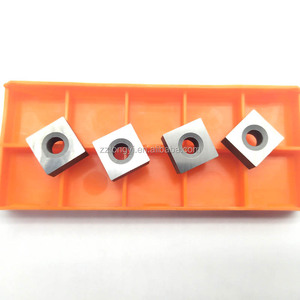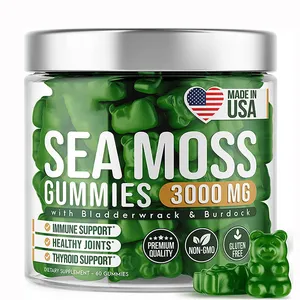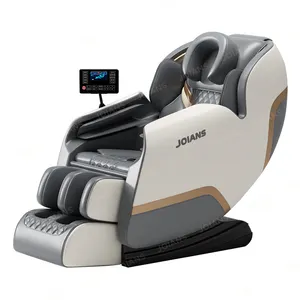Phổ biến trong ngành của bạn

Nhà máy Carbide Tipped Saw gỗ cứng ban nhạc đã thấy lưỡi TCT Tungsten bandsaw lưỡi cho gỗ-mizer lưỡi cưa
3,65 US$ - 4,69 US$
Đơn hàng tối thiểu: 10 Mét
Vận chuyển mỗi chiếc: 4,54 US$


Lưỡi Cưa Tròn 115Mm Dùng Cho Gỗ, Lưỡi Cưa Kim Cương Máy Đánh Bóng Đá Cẩm Thạch, Đĩa Cắt Kim Loại Dùng Cho Cưa Cắt
1.000,00 US$
Đơn hàng tối thiểu: 1 Cái


Máy Cưa Cầm Tay 176 C75s Cao Cong Hợp Kim Carbide Dập Tắt Cứng Răng Ban Nhạc Saw Blade Dải Thép Cho Gỗ Cứng Trực Tiếp
0,99 US$ - 1,09 US$
Đơn hàng tối thiểu: 1 Mét


BFL Carbide Cutter Up & Down Chế Biến Gỗ Nén Router Bit CNC Gỗ End Mill Công Cụ Cắt Frez
3,00 US$ - 9,89 US$
Đơn hàng tối thiểu: 5 Cái


Đá Cắt Chèn Tungsten Carbide Chèn Cho BENETTI, GARRONE, KORFMANN Chuỗi Đã Thấy Máy
0,30 US$ - 1,99 US$
Đơn hàng tối thiểu: 5 Cái

Carbide Quảng Đá Cẩm Thạch Cưa Xích Máy Cắt Cnc Công Cụ Chuyển Chèn
0,65 US$ - 0,75 US$
Đơn hàng tối thiểu: 20 Cái

Tungsten Carbide Chain Saw Chèn Cho Fantini Garrone Xích Đã Thấy Máy Cắt
0,60 US$ - 0,80 US$
Đơn hàng tối thiểu: 5 Cái


As Thiêu Kết Chèn Cacbua Widia Để Khai Thác Đá Trong Máy Cưa Xích
1,05 US$ - 5,65 US$
Đơn hàng tối thiểu: 10 Cái

Tungsten Carbide Chain Saw Chèn Cacbua Cắt Mẹo Cho Đá Cẩm Thạch Cắt Xích Đã Thấy Máy
0,85 US$ - 1,15 US$
Đơn hàng tối thiểu: 100 Cái

Các tìm kiếm liên quan:
dụng cụ cưa cacbuacông cụ cưa cacbua công nghiệpchèn cưa cacbuacưa cacbuadụng cụ cắt cưa xích kim cươngdụng cụ cắt cưa băngdụng cụ cắt cưa nhỏdụng cụ cưa cacbuafantini chuỗi thấy cacbua chènchèn cưa xích cacbuatungsten carbide chain saw chènphụ tùng nhựa cưa xích58cc chain saw phụ tùngdụng cụ cưa taydụng cụ cưa

Lưỡi Cưa Xích Cacbua Chèn Thanh Dẫn Hướng Lưỡi Rộng 16 Inch 20Inch
3,20 US$ - 5,20 US$
Đơn hàng tối thiểu: 2 Cái

Nấm hình PDC Cutter PDC chèn Trung Quốc nhà máy cho mài bánh xe hoặc đá chuỗi Saw sử dụng
2,00 US$ - 100,00 US$
Đơn hàng tối thiểu: 5 Cái

Máy Cắt PCD Nhu Cầu Lớn Hình Tròn Và Hình Vuông 0808 1008 1308 1313 1613 Cho Máy Cưa Xích Đá Cẩm Thạch
Sẵn sàng vận chuyển
5,00 US$
Đơn hàng tối thiểu: 5 Cái
Vận chuyển mỗi chiếc: 4,04 US$

1308 PDC Máy cắt 1313 PDC Cutter mạnh mẽ đá Máy cắt Chain Saw Quarry máy cắt, Chain ARM Saw kim cương Cutter
12,00 US$ - 15,00 US$
Đơn hàng tối thiểu: 20 Cái

Tungsten carbide PDC Máy cắt xi lanh khối Vòng chèn dầu khoan bit cho chuỗi thấy công cụ cắt
57,00 US$
Đơn hàng tối thiểu: 3 Kilogram

Giá tốt nhất thương hiệu Hàn Quốc wcmx050308 chuỗi thấy chèn lưỡi rộng hướng dẫn thanh vonfram Ống scarfing chèn pport chèn Carbide
Sẵn sàng vận chuyển
1,39 US$ - 1,57 US$
Đơn hàng tối thiểu: 10 Cái
Vận chuyển mỗi chiếc: 0,50 US$


FANTINI Đá Mỏ Xích Cưa Máy Cắt Phụ Tùng Tungsten Carbide Chèn
Sẵn sàng vận chuyển
0,68 US$ - 1,00 US$
Đơn hàng tối thiểu: 500 Cái
Vận chuyển mỗi chiếc: 2,60 US$

As Thiêu Kết Chèn Cacbua Widia Để Khai Thác Đá Trong Máy Cưa Xích
1,05 US$ - 5,65 US$
Đơn hàng tối thiểu: 10 Cái

Widia Dụng Cụ Vuông Cacbua Đầu Cắt Đá Cacbua Vonfram Cho Máy Cưa Xích
0,69 US$
Đơn hàng tối thiểu: 10 Cái

Mũi Cưa Xích Cacbua Vonfram Mũi Cắt Cacbua Cho Máy Cưa Xích Cắt Đá
0,65 US$ - 0,95 US$
Đơn hàng tối thiểu: 100 Cái

Máy Cưa Xích PDC Máy Cắt Đá Cẩm Thạch Bán Sỉ Trung Quốc
Sẵn sàng vận chuyển
10,00 US$
Đơn hàng tối thiểu: 10 Cái
Vận chuyển mỗi chiếc: 11,90 US$

OEM vuông phay Cutter cho kim loại End phay Nội Bộ cutter CNC Blade Lathe công cụ chèn
45,80 US$ - 45,90 US$
Đơn hàng tối thiểu: 1 Kilogram

Widia Carbide Vuông Công Cụ Tungsten Carbide Đá Cắt Chèn Cho Cưa Xích Máy
0,30 US$ - 0,90 US$
Đơn hàng tối thiểu: 5 Cái

Carbide Quảng Đá Cẩm Thạch Cưa Xích Máy Cắt Cnc Công Cụ Chuyển Chèn
0,65 US$ - 0,75 US$
Đơn hàng tối thiểu: 20 Cái

Đầu Cắt Cacbua Vonfram Đầu Chèn Cưa Xích Cho Máy Cắt Đá
0,68 US$ - 0,75 US$
Đơn hàng tối thiểu: 100 Cái

Các Loại Chèn Cacbua Xi Măng Khác Nhau Cho Đá Cẩm Thạch Và Đá
Sẵn sàng vận chuyển
10,00 US$
Đơn hàng tối thiểu: 10 Cái
Vận chuyển mỗi chiếc: 11,90 US$

Hot bán mặc sức đề kháng chèn cho đá cẩm thạch đá cắt/Carbide chuỗi Saw chèn cho fantini đá Máy cắt
39,80 US$ - 39,90 US$
Đơn hàng tối thiểu: 3 Kilogram

Widia Chèn Cho Cắt Đá Của Ý Chuỗi Đã Thấy Máy Trong Tungsten Carbide
0,30 US$ - 0,90 US$
Đơn hàng tối thiểu: 5 Cái

Tungsten Carbide 12.7*12.7*6.5/6.7 Chain Saw Chèn Cho Máy Cắt Đá
0,42 US$ - 0,58 US$
Đơn hàng tối thiểu: 500 Cái

Đầu Cắt Cacbua Vonfram Đầu Chèn Cưa Xích Cho Máy Cắt Đá
0,68 US$ - 1,00 US$
Đơn hàng tối thiểu: 500 Cái

Mũi Cưa Xích Cacbua Chất Lượng Cao Cho Máy Cắt Đá Fantini
1,00 US$ - 10,00 US$
Đơn hàng tối thiểu: 50 Cái

Vuông Hình Dạng PDC Chèn Với Bước Cho Cưa Xích Máy Móc Trong Đá Cẩm Thạch Quary Khai Thác Mỏ Chuỗi Saw Cắt Các Bộ Phận Máy
16,00 US$ - 19,00 US$
Đơn hàng tối thiểu: 1 Cái

Đa Tinh Thể Kim Cương PDC Cắt PCD Chèn Đối Với Đá Cắt Cưa Xích Máy
38,00 US$ - 39,00 US$
Đơn hàng tối thiểu: 100 Cái

Giá Đỡ Chèn 1613 PDC Cho Máy Cưa Xích Để Cắt Đá Cẩm Thạch
9,00 US$ - 10,00 US$
Đơn hàng tối thiểu: 20 Cái

PDC Cutter với Đuôi Đá khai thác đá cắt chuỗi Saw Máy chèn 1304 hình PDC chèn cho đá Granite cắt đá
7,50 US$ - 11,70 US$
Đơn hàng tối thiểu: 10 Cái
Vận chuyển mỗi chiếc: 4,74 US$

PCD PDC Tip Insert PKD Tungsten Carbide Chain Saw Máy Cắt Cho Granite & Marble
Sẵn sàng vận chuyển
3,00 US$
Đơn hàng tối thiểu: 100 Cái
Vận chuyển mỗi chiếc: 5,40 US$

Phụ Kiện Cắt Pdc Chất Lượng Cao 1308 Để Cắt Đá Cẩm Thạch Trong Máy Cưa Xích
11,00 US$ - 15,00 US$
Đơn hàng tối thiểu: 10 Cái
Vận chuyển mỗi chiếc: 13,56 US$
Các danh mục hàng đầu
Giới thiệu về chuỗi cưa máy chèn cacbua
Ngày nay, chuỗi cưa máy chèn cacbua không còn là điều mới mẻ đối với những người bình thường và không còn bị coi là điều cấm kỵ khi sử dụng. Nếu bạn đang tìm kiếm niềm vui áp chót đó, bạn phải kiểm tra sự bao la. Bộ sưu tập chuỗi cưa máy chèn cacbua tại Alibaba.com. Những gợi cảm và cong. chuỗi cưa máy chèn cacbua đáng giá từng xu và chắc chắn làm cho đêm đó trở nên đặc biệt đối với bạn. Những con búp bê này có ngoại hình giống như thật, bắt đầu từ tóc đến ngón chân theo mọi nghĩa.
Cho dù bạn là một người cô đơn đang tìm kiếm một người bạn đời như cuộc sống hay một cặp vợ chồng muốn thêm gia vị cho cuộc sống của họ, bạn đều có thể sử dụng chúng . chuỗi cưa máy chèn cacbua để đốt cháy ngọn lửa đó. Những ngoạn mục. chuỗi cưa máy chèn cacbua có thể tùy chỉnh theo mong đợi của bạn. Những điều tuyệt vời. chuỗi cưa máy chèn cacbua có sẵn ở cả phiên bản dành cho nam và nữ và được làm từ silicone cấp y tế để sử dụng an toàn. Hãy sở hữu ngay bây giờ và tận hưởng một đêm đam mê và cháy bỏng.
Alibaba.com cung cấp những điều tuyệt vời này. chuỗi cưa máy chèn cacbua ở mọi hình dạng cơ thể, kích thước và sắc tộc. Dù yêu cầu của bạn đối với. chuỗi cưa máy chèn cacbua, bạn có thể tải tất cả chúng trên trang web. Những cái này. chuỗi cưa máy chèn cacbua được tạo hình bởi những người thợ thủ công giỏi nhất và mọi chi tiết phức tạp đều được kiểm tra kỹ lưỡng. Những con búp bê này có mắt, tóc, móng tay và tất cả các bộ phận cơ thể khác tương tự như người thật.
Alibaba.com cung cấp nhiều loại. chuỗi cưa máy chèn cacbua có thể giúp bạn mua các sản phẩm phù hợp với ngân sách và các yêu cầu khác của bạn. Các sản phẩm này an toàn để sử dụng, được chứng nhận và thân thiện với môi trường trong tự nhiên. Đơn đặt hàng OEM có sẵn trên các sản phẩm này.
Cho dù bạn là một người cô đơn đang tìm kiếm một người bạn đời như cuộc sống hay một cặp vợ chồng muốn thêm gia vị cho cuộc sống của họ, bạn đều có thể sử dụng chúng . chuỗi cưa máy chèn cacbua để đốt cháy ngọn lửa đó. Những ngoạn mục. chuỗi cưa máy chèn cacbua có thể tùy chỉnh theo mong đợi của bạn. Những điều tuyệt vời. chuỗi cưa máy chèn cacbua có sẵn ở cả phiên bản dành cho nam và nữ và được làm từ silicone cấp y tế để sử dụng an toàn. Hãy sở hữu ngay bây giờ và tận hưởng một đêm đam mê và cháy bỏng.
Alibaba.com cung cấp những điều tuyệt vời này. chuỗi cưa máy chèn cacbua ở mọi hình dạng cơ thể, kích thước và sắc tộc. Dù yêu cầu của bạn đối với. chuỗi cưa máy chèn cacbua, bạn có thể tải tất cả chúng trên trang web. Những cái này. chuỗi cưa máy chèn cacbua được tạo hình bởi những người thợ thủ công giỏi nhất và mọi chi tiết phức tạp đều được kiểm tra kỹ lưỡng. Những con búp bê này có mắt, tóc, móng tay và tất cả các bộ phận cơ thể khác tương tự như người thật.
Alibaba.com cung cấp nhiều loại. chuỗi cưa máy chèn cacbua có thể giúp bạn mua các sản phẩm phù hợp với ngân sách và các yêu cầu khác của bạn. Các sản phẩm này an toàn để sử dụng, được chứng nhận và thân thiện với môi trường trong tự nhiên. Đơn đặt hàng OEM có sẵn trên các sản phẩm này.












